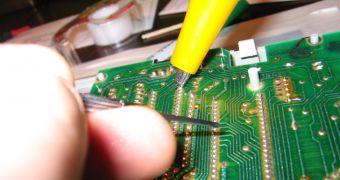An intrusion detection system for cars has been developed by security experts, in order to mitigate the risks posed by the technological advances adopted by the vehicles.
One of the most resounding car-hacking examples is Charlie Miller and Chris Valasek’s demonstration last year, when they completely took control of a Ford Escape and a Toyota Prius.
A more recent example is the announcement made last week by Qihoo 360 representatives that they managed to bypass the security systems of Tesla Model S at the Syscan 360 security conference in Beijing.
At the Black Hat USA security conference next month, the two security experts plan to present a device that could foil attempts to take over the car's commands. They devised the intrusion detection system from an mbed NXP micro-controller and a circuit board, everything amounting to a total of $150 / €111.
The anti-hacking device is connected to the OBD2 port beneath the car’s dashboard. It functions by recording the patterns during a routine driving session, and when in detection mode, it can identify the abnormal commands and block them.
Miller and Valasek have presented the device to Wired and said that, if anomalies are detected, the car is automatically put into “limp mode,” a state that turns off the network and higher-level functions.
During their tests, the two experts told the publication that they did not encounter false positives, mainly because “the automotive world, the traffic is so normalized that it’s very obvious when something happens that’s not supposed to happen.”
Miller and Valasek have no plans for monetizing the device; instead, they want to use it as a proof-of-concept for showing how easy car builders can implement protection against cyber-attacks into their products.

 14 DAY TRIAL //
14 DAY TRIAL //